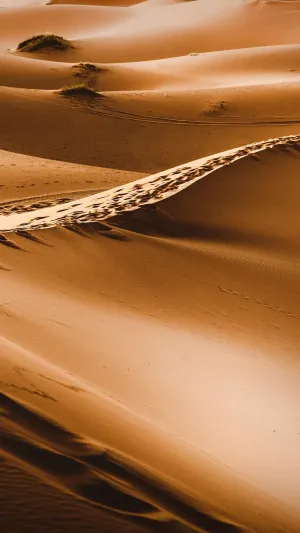In your impression, the desert must be extremely dry, and a drop of water cannot be seen. However, there is a desert in the world, which is the oldest desert in the world.
It is also the only desert with tens of billions of tons of water. The margins of this desert are often raining, but there is no drop of water in most parts of the desert area. It is the famous Namib desert.
The main body of the Nambi Desert is located in Namibia, and the tropic of Capricorn passes through it. Because it is located on the coast of the Atlantic Ocean, its identity is always questioned: Is it a desert or a large beach by the sea?
The dry sand here extends from the seaside to more than 100 kilometers inland, and there are obvious crescent dunes in some places. Because of these typical characteristics, it is eventually classified as a desert.
The climate of the Namib desert is amazing. This is one of the most drought places in the world. It is usually dry and hot, and the sunlight is strong.
However, in about half a month, there will be a fog here. The dense fog spread to the ground and spread into the desert.
There is no industrial pollution and no haze here. This fog is the sea fog formed by pure water vapor. If you look down from the plane, you can see that the dense fog is spreading from the sea to the inland area.
The wet dense fog and the drought desert form a sharp contrast.
The Namib Desert has a number of world-class titles. It is not only one of the driest deserts in the world, but also the hottest desert in the world. In the afternoon, the temperature here is as high as 50 ° C, and the highest record temperature has reached 67 ° C.
It also has the highest 300 -meter sand dunes in the world, but the average altitude of the nano desert does not exceed 500 meters.
The most attractive part of the Namib desert should be its red. The desert we generally see is yellow, but you will see the red desert in the Namib Desert.
This is because the rich iron becomes red after being oxidized, forming a red dune. With the changes in the angle of the sun, the color of the desert has continued to change during the day.
The nanobulin desert is extremely dry, with an annual rainfall of less than 10 mm. The environment here is very harsh, and plants that want to survive here must have a variety of adaptability.
Because of its ancient, Namib may have more unique species than any other desert in the world. Most of the desert wild animals here are limb animals and other small animals.
There are rich fishery resources near the coast, living a group of brown sea dogs and water birds. Although the Namib desert is mainly barren vegetation, some dense plants were found in coastal areas.
There are also several trees that can also survive under the climate of extremely arid.
As the coastal desert, the Namib desert has much unique scenery that other desert does not have. Whether it is rare red dunes or the unique species of ancient deserts, this is highlighting the different charm of the Namib desert.
The Namib desert will not disappoint you, but it will break your inherent views on Africa and experience a different desert journey.





